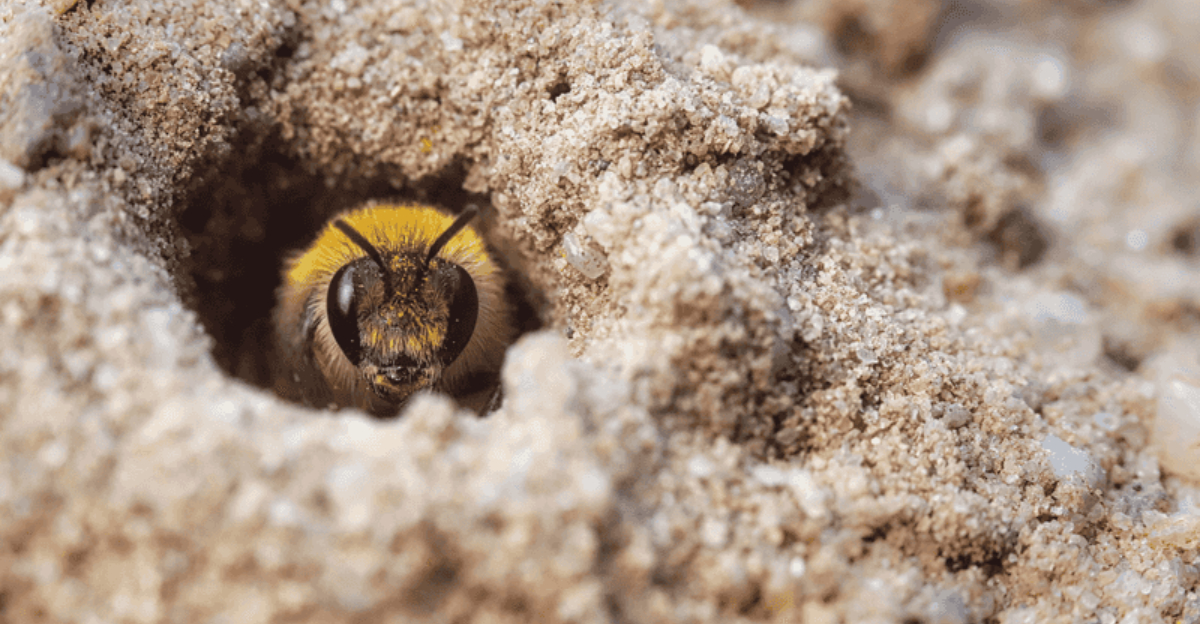Ground-nesting bees are fascinating creatures that play a crucial role in our ecosystem. These hardworking pollinators often go unnoticed as they make their homes beneath our feet.
Today we’ll explore six types of bees that prefer to nest in the ground, each with unique characteristics and behaviors.
Join us as we delve into the world of these remarkable insects and learn more about their vital contributions to nature.
1. Bumblebees
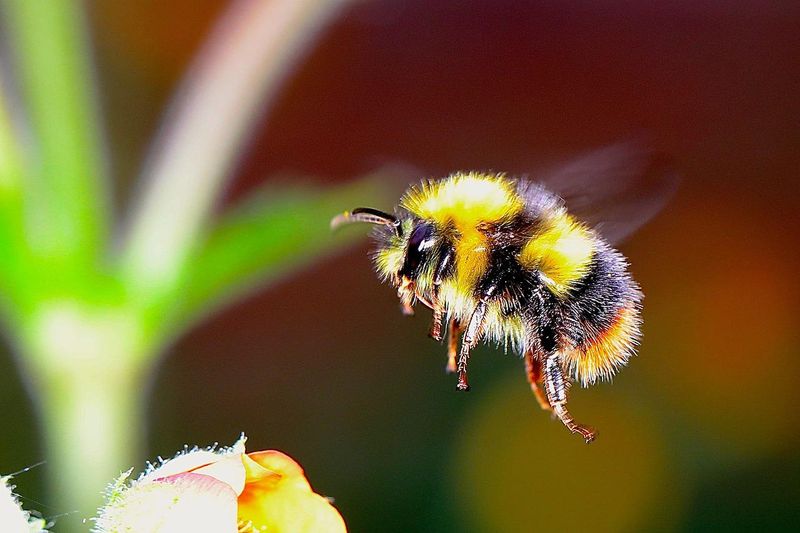
Bumblebees are among the most recognizable and beloved of all bee species. With their fuzzy bodies and distinctive black and yellow stripes, they are a common sight in gardens and fields. Bumblebees prefer to nest in the ground, often choosing abandoned rodent burrows or thick grass to create their colonies.
These social insects live in groups, working together to gather nectar and pollen for their young. Unlike honeybees, bumblebee colonies are relatively small, usually consisting of 50 to 400 individuals. Each colony has a queen, who is responsible for laying eggs and ensuring the survival of her group.
Bumblebees are excellent pollinators, contributing to the growth of many wildflowers and crops. Their ability to perform “buzz pollination” makes them particularly effective at pollinating certain plants, like tomatoes and peppers. By vibrating their bodies, they release pollen that would otherwise remain trapped in the flowers.
To encourage bumblebee populations, gardeners can plant native flowers and avoid using pesticides. Providing habitats such as piles of leaves or logs can also help these bees find suitable nesting sites. Supporting bumblebees is vital for maintaining biodiversity and ensuring healthy ecosystems.
2. Mining Bees
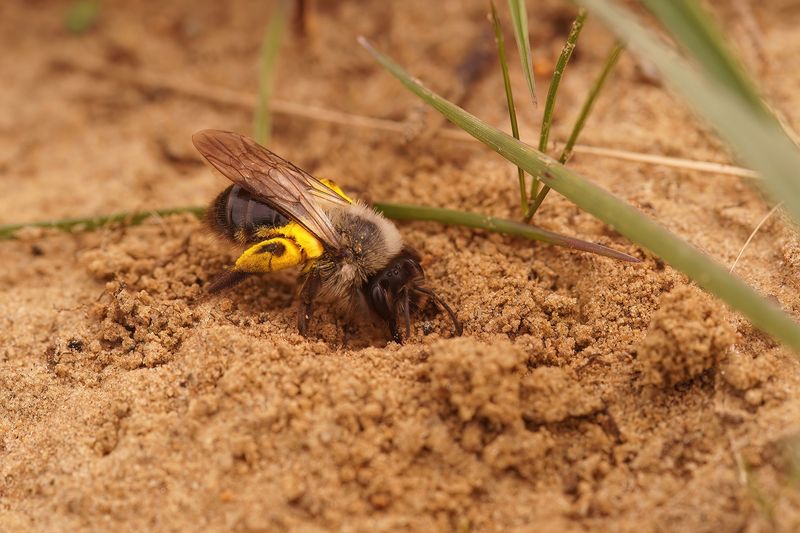
Mining bees are solitary creatures known for their industrious nature and affinity for sandy or loose soil. These bees are part of the Andrenidae family and are often seen in early spring, busily digging their nests in the ground.
Each female mining bee creates her own nest, a series of tunnels leading to individual brood cells where she lays her eggs.
The entrance to these nests is usually marked by a small mound of excavated soil, resembling a tiny volcano. Despite their solitary nature, mining bees often nest in large aggregations, creating a bustling bee community.
Mining bees are important pollinators, particularly for early spring flowers like willows, maples, and fruit trees. Their timely emergence ensures that these plants receive the necessary pollination at the start of the growing season.
To support mining bees, gardeners can maintain areas of bare soil and avoid excessive mulching. Allowing wildflowers to grow and bloom in gardens can also provide these bees with essential food sources.
Understanding and appreciating the role of mining bees helps foster a more bee-friendly environment and supports broader ecological health.
3. Sweat Bees
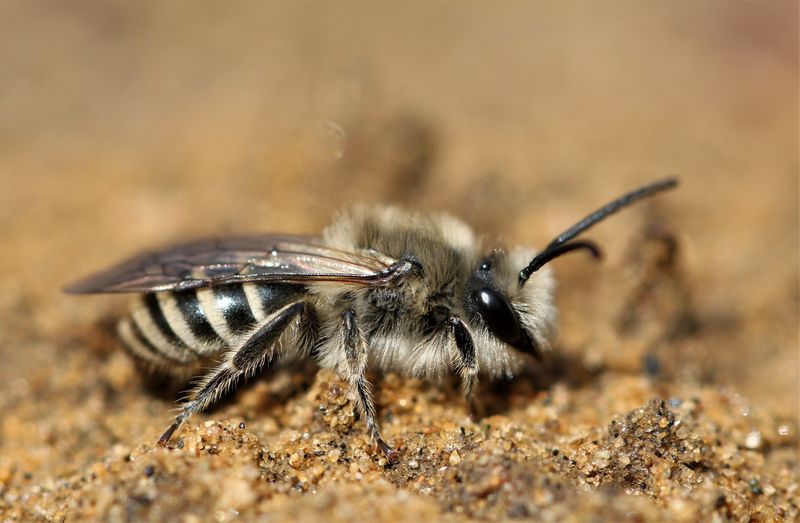
Sweat bees are small, often metallic in color, and are known for their attraction to human perspiration. These bees belong to the Halictidae family and exhibit a wide range of nesting behaviors, with many choosing to nest in the ground.
Ground-nesting sweat bees create burrows in well-drained soil, where each female constructs her own nest.
The nests consist of a main tunnel with several side branches, each ending in a brood cell stocked with pollen and nectar for the developing larvae. Sweat bees can be either solitary or social, with some species forming small colonies.
These bees are valuable pollinators for a variety of wildflowers and crops, including sunflowers, peaches, and plums. Their small size allows them to pollinate flowers that are inaccessible to larger bees. By visiting a wide range of flowers, sweat bees contribute significantly to biodiversity and plant reproduction.
To attract sweat bees, plant a diverse array of flowering plants and provide patches of bare, undisturbed soil for nesting. Reducing chemical use in gardens also creates a safer habitat for these bees. Encouraging sweat bees can enhance garden health and contribute to thriving local ecosystems.
4. Digger Bees
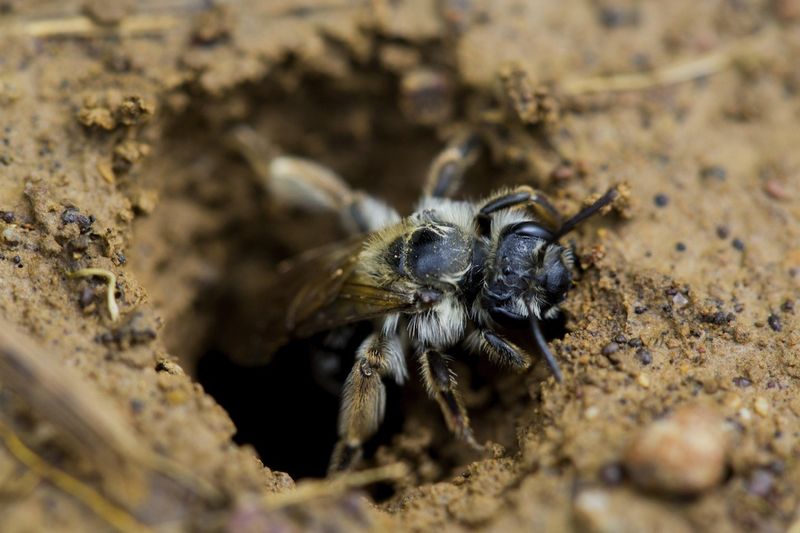
Digger bees are fascinating insects known for their robust bodies and ground-nesting habits. Belonging to the Anthophorini tribe, these bees often nest in sandy or loose soil, making their homes in rural areas or open fields.
Female digger bees dig deep burrows, sometimes several feet long, with branching tunnels that lead to brood cells. Each cell is stocked with pollen and nectar, providing nourishment for the developing larvae. The nests are often well-hidden, with only a small entrance visible at the surface.
Digger bees are efficient pollinators, particularly for fruit trees, clover, and other flowering plants. Their ability to fly long distances enables them to cover large areas, spreading pollen far and wide. This makes them essential contributors to both natural ecosystems and agricultural landscapes.
Gardeners can support digger bees by providing open, undisturbed spaces with sandy or loose soil. Planting native flowers and minimizing pesticide use also helps create a welcoming environment for these bees.
By fostering digger bee populations, we contribute to healthier gardens and more productive agricultural systems.
5. Cellophane Bees
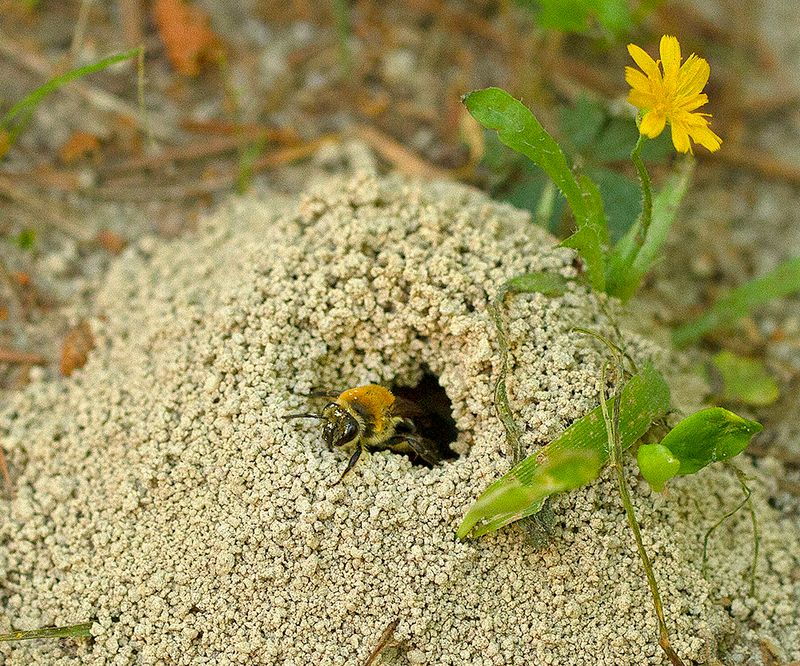
Cellophane bees, also known as plasterer bees, are unique ground-nesters from the Colletidae family. They derive their name from the cellophane-like material they use to line their nests, ensuring moisture resistance and protection for their young.
These solitary bees dig individual burrows in sandy or loamy soil, often in wooded areas or near meadows.
Each burrow contains several brood cells, each carefully lined with their signature waterproof secretion. This material helps preserve the pollen and nectar provisions, ensuring the larvae have a safe, nurturing environment.
Cellophane bees are active in early spring and are vital pollinators for many wildflowers and fruit-bearing plants.
Their presence helps kickstart the blooming cycle, supporting plant growth and biodiversity. These bees are particularly adept at pollinating flowers with specialized structures, thanks to their unique anatomy.
To encourage cellophane bees, gardeners should maintain natural, undisturbed spaces and plant early-blooming flowers.
Avoiding chemicals and supporting habitat diversity are also key to attracting these beneficial insects. Embracing cellophane bees in our gardens not only supports them but also enhances overall ecological health.
6. Yellow-Faced Bees
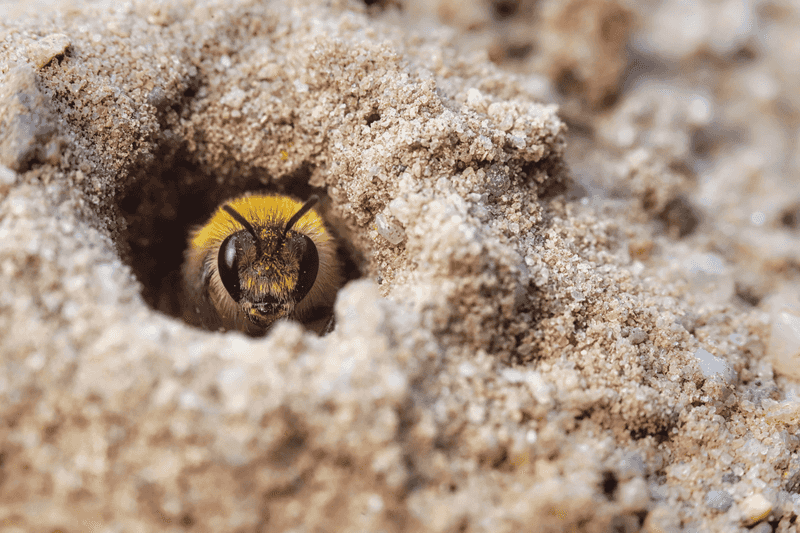
Yellow-faced bees are small, slender insects known for their distinctive yellow facial markings. These bees, part of the Colletidae family, are typically found in tropical and subtropical regions, where they prefer to nest in the ground.
Unlike many other ground-nesting bees, yellow-faced bees often nest in pre-existing cavities or hollow stems near the ground, making them versatile in their nesting habits.
These solitary bees are crucial pollinators for a variety of tropical plants and flowers, contributing to the rich biodiversity of these regions.
The nesting process involves the female yellow-faced bee carefully selecting her nest site, where she will lay her eggs and provide food for her larvae. These bees are known for their neat, orderly nests, often lined with a thin layer of waterproof material to protect against moisture.
To support yellow-faced bees, conservation efforts should focus on preserving natural habitats and reducing deforestation.
Planting native flora and minimizing pesticide use are also essential to provide these bees with safe nesting and foraging environments. By promoting yellow-faced bee populations, we help sustain the delicate balance of tropical ecosystems and enhance plant diversity.

